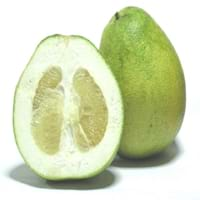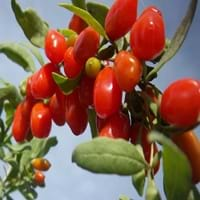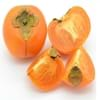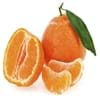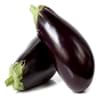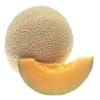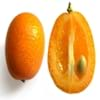Health Benefits
Cancer prevention, Heart care, Prevents Urinary Tract Infection
Anti-oxidant properties, Eye care, Helps in cartilage regeneration, Regulates Blood Sugar, Treatment of osteoarthritis
General Benefits
Digestive aid, Fights against infections, Flu treatment, Healing of wounds, Helps in weight loss, Treatment of common cold
Boosts immune system, Digestive aid
Skin Benefits
Anti-aging benefits, Brightens and lightens complexion
Anti-aging benefits, Reduces wrinkles, Treatment of skin diseases
Hair Benefits
Promotes longer and healthier hair, Protects hair
Protects hair, Regulates hair growth
Allergy Symptoms
Abdominal cramps, Abdominal pains, Diarrhea, Lightheadedness, Nasal congestion, Nausea, Swallowing difficulties, Swelling of mouth, tongue or lips, Vomiting
Anaphylaxis, Itching, Sneezing, Wheezing
Side Effects
Allergic reaction, Dizziness, Stomach pain
May interact with some drugs
Best Time to Eat
As a snack in the late afternoon, Don't consume at night and before bed, Eat the fresh ones, avoid mixing with any other foods, don't eat after meal., Morning time (before lunch)
Any time except an hour after meal, Don't consume at night and before bed
Vitamin A (Retinol)
Not Available
Vitamin B5 (Pantothenic Acid)
Not Available
Vitamin B9 (Folic acid)
Not Available
Vitamin C (Ascorbic Acid)
Vitamin E (Tocopherole)
Not Available
Vitamin K (Phyllochinone)
Not Available
Lutein+Zeaxanthin
Not Available
Phytosterol
Not Available
Calories in Fresh Fruit with Peel
Calories in Fresh Fruit without Peel
Not Available
Not Available
Calories in Frozen Form
Not Available
Calories in Canned Form
Not Available
Not Available
Calories in Jam
Not Available
Type
Citrus, Tropical
Berry
Season
All seasons
Autumn
Varieties
Chandler, Cocktail, Cuban Shaddock, Hirado Buntan, Honey, Jaffa Red, Mato Buntan, Pomelit, Reinking, Siamese Sweet and Sweetie
No Types
Color
Green, Pink, Red, Yellow
Scarlet red
Inside Color
Creamy Yellow
Orange
Taste
Juicy, Sweet
Slightly bitter, Tart
Origin
Malaysia, South-Eastern Asia, Thailand
Unknown
Soil Type
Clay, Loam, Sandy
Well-drained
Climatic Conditions
Warm
Cold, Hot
Facts about
- Flowers of pomelo fruit are used to make perfumes.
- Pomelo tree wood is used for the manufacture of tool handles.
- Life of pomelo tree is around 10 years.
- Height of pomelo can be 15-20 feet.
- Study says a man named Li Qing Yuen used to eat goji berries daily and lived for 252 years.
- They are also known as wolfberries in India & China.
- This fruit is used for spiritual purposes at many places.
Other Countries
Argentina, India, Israel, Mexico, South Africa, Sudan, Thailand, Turkey, United States of America
Canada, France, India, United States of America
Top Importer
Europe
United States of America
Top Exporter
United States of America
China
Botanical Name
Citrus maxima
Lycium barbarum
Synonym
Citrus grandis
Wolfberry
Subkingdom
Tracheobionta
Tracheobionta
Division
Magnoliophyta
Unknown
Class
Magnoliopsida
Unknown
Subclass
Rosidae
Asteridae
Order
Sapindales
Solanales
Family
Rutaceae
Solanaceae
Species
C. maxima
L. barbarum
Generic Group
Citrus fruit
Not Available
Compare Pomelo and Gojiberry
It is important compare Pomelo and Gojiberry as both the fruits have a different nutritional value. Their comparison can be done on the basis of their vitamin and mineral content, calories, benefits as well as characteristics, making it easier for us to choose the best fruit for our diet. Their general health benefits are as follows:
Pomelo Benefits: digestive aid, fights against infections, flu treatment, healing of wounds, helps in weight loss and treatment of common cold.
Gojiberry Benefits: boosts immune system and digestive aid.
Fruits are also used as a remedy for various hair problems. The hair benefits of Pomelo are: promotes longer and healthier hair and protects hair and hair benefits of Gojiberry are: protects hair and regulates hair growth. Some fruits are known to cause allergic reactions. The allergy symptoms of first fruit are: abdominal cramps, abdominal pains, diarrhea, lightheadedness, nasal congestion, nausea, swallowing difficulties, swelling of mouth tongue or lips and vomiting and the symptoms of second fruit are: anaphylaxis, itching, sneezing and wheezing. Get sorted Pomelo vs Gojiberry comparison with the help of fruit comparison tool by fruitvs.com.
